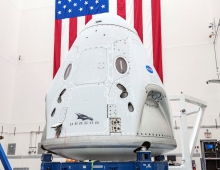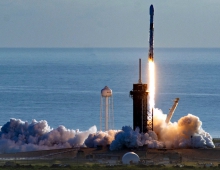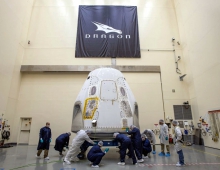
SpaceX Completes 19th Starlink Mission
SpaceX has successfully completed its 19th commercial resupply (CRS) mission for the International Space Station.
On Monday, January 6 SpaceX launched its third launch of Starlink satellites from Space Launch Complex 40 (SLC-40) at Cape Canaveral Air Force Station, Florida.
alcon 9’s first stage supported a Starlink mission in May 2019, the Iridium-8 mission in January 2019, and the Telstar 18 VANTAGE mission in September 2018.
Following stage separation, SpaceX landed Falcon 9’s first stage on the “Of Course I Still Love You” droneship, which was stationed in the Atlantic Ocean.
The Dragon spent around a month docked at the ISS, while astronauts unloaded its contents, including around 5,700 lbs of supplies and experiments. Dragon returned with cargo, as well, including scientific investigations.
From here, the Dragon will be recovered from the Pacific and its contents will be recovered once it's ferried back to dry land.
The Starlink satellites will deploy at an altitude of 290 km. Prior to orbit raise, SpaceX engineers will conduct data reviews to ensure all Starlink satellites are operating as intended. Once the checkouts are complete, the satellites will then use their onboard ion thrusters to moveinto their intended orbits.
Starlink will provide internet to locations where access has been unreliable, expensive, or completely unavailable. Starlink satellite flight operations take place in three phases: orbit raise, on-station service, and deorbit. After deployment, over the course of oneto four months, the satellites use their onboard thrusters to raise from an altitude of 290km to 550 km. During this phaseof flightthe satellites are closely clustered and their solar arrays are in a special low-drag configuration, making them appear more visible from the ground. Once the satellites reach their operational altitude of 550km and begin on-station service, their orientation changes and the satellites become significantly less visible from the ground. On this flight, SpaceX is also testing an experimental darkening treatmenton one satellite to further reduce the albedo of the body of the satellites.
Throughout flight operations, SpaceX shares high-fidelity tracking data with other satellite operators through the U.S. Air Force's 18th Space Control Squadron. Additionally,SpaceX is providing astronomy groups with predictive two-line elements (TLEs) in advance of launch so astronomers can better coordinate their observations with the satellites.
SpaceX has another resupply mission on the books coming up in early March.





















